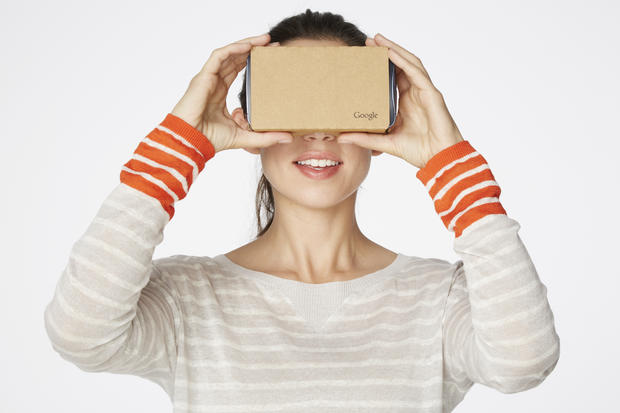What's coming from Google: I/O developer conference highlights
Google's annual I/O developers conference kicked off Thursday in San Francisco, offering a glimpse of what's to come from the company in the next year.
The two-day event opened with a keynote address from Sundar Pichai, Google's senior vice president overseeing Android, Chrome, and Google Apps, who was followed by a number of high ranking product specialists, all presenting on the biggest software and product changes on the horizon.
While many of the revelations at this, like any other such conference, could only elicit squeals and applause from coders and engineers, there was plenty for your average Google user to get excited about. Here are some of the highlights:
HBO Now is coming to Chromecast and Android After an initial exclusive launch on Apple devices, the premium cable streaming service comes to Google.
Android M Google calls the newest version of its mobile operating system "the most powerful Android release yet." It will run things like a new mobile payment system and it will be smarter about saving battery life. It'll also give you more control over app permissions; you'll allow them as needed rather all at once, than up front when you install an app. So, say you download WhatsApp, you won't give it permission to access your microphone until you actually go to use the microphone. You'll also be able to modify individual permissions within settings.
Android Pay Forget Google Wallet (oh, you already have?), Google is launching Android Pay, an open-platform NFC mobile payment system to rival Apple Pay. And like Apple Pay, it will work with fingerprint readers being introduced on Android phones such as the Samsung Galaxy S6. Phones without sensors will use PIN codes or unlock patterns. MasterCard and Amex and already on board.
Better power management Sick of your Android phone or tablet conking out before the day is done? The new "Doze" mode uses motion sensing to determine if you've left your device unattended for a stretch and switches into a deeper sleep that turns off some background activity to save some juice. Google said devices will last up to two times longer on standby.
USB Type C integration It doesn't sound sexy, but Google is just one step behind Apple in phasing out standard USB plug configurations for Type C. "Coming to a phone near you soon," according to VP of engineering Dave Burkey, USB-C means you'll be able to charge your phone three to five times faster, and use your phone to charge another device. And of course, everyone's favorite feature: The plug can go into the port either way, so no more 50/50 shot of getting it right.
Android Wear updates When David Singleton, VP of Wear, Google's wearable operating system, was on stage, he underscored again and again a defining difference between Android smartwatches and Apple Watch: choice. He said there are 1,500 watch faces available today. They also let you tell time -- whenever you want, without having to do anything. The new Wear will support a low-power mode that lets you keep the time on top without draining your battery. Other "always on" apps will stay up on the screen while you're using them, so you needn't go back into them over and over.
New gestures will enable you to scroll through notifications and pages with a twist of the wrist. And you can draw a picture of an emoji with your finger on the touchscreen and the OS will recognize it and pull up the right one for you. Singleton also pointed out some cool features of new updates to some of Wear's 4,000-plus apps, including being able to summon an Uber pickup by saying "OK, Google, call a car."
Google Now, now with more mind reading Aparna Chennapragada, the director of Google Now, showed off Now on Tap, an update to the built-in smartphone app that tells you how long it will take to get home and when you're next appointment is (without being asked to). For example, if you read a text message that mentions dinner at a restaurant and asks you to pick up the dry cleaning, a long press on the home button will pull up the restaurant's listing and create a reminder to go to the cleaners. "That's some like epic natural language understanding action going on here," Chennapragada said. (See the action in action, above.)
New Google Photos Rolling out Thursday, the new Google Photos app syncs all your photos from all your devices and backs them up automatically in Drive. By default, it sorts pictures by day. Pinch the screen and it sorts by month, pinch again to sort by year -- big improvement over scrolling to find an image until you give up. It also makes selecting multiple photos easy with hold-and-drag, and lets you create a custom link to share just that selection.
Offline Maps Staring sometime "later this year," you'll be able to use Google Maps better offline, searching, using autocomplete, and getting reviews and turn-by-turn directions all without an Internet connection. It will be great for travelers trying to navigate without service or faced with nasty roaming charges. But not explained: how to download maps to make this function work.
Virtual reality Google is sticking inside the box, which is to say, it's sticking with Cardboard, its cheap-o stick-a-phone-in-it version of a virtual reality headset. People have folded up 1 million Cardboard viewers to get a virtual reality experience with their smartphones. The new version fits bigger phones (up to 6-inch screens) and the software will support iOS, too, which means you'll be able to pop an iPhone in there and have apps that work. But, Clay Bavor, VP of product management assured, "It's still just a piece of cardboard.

